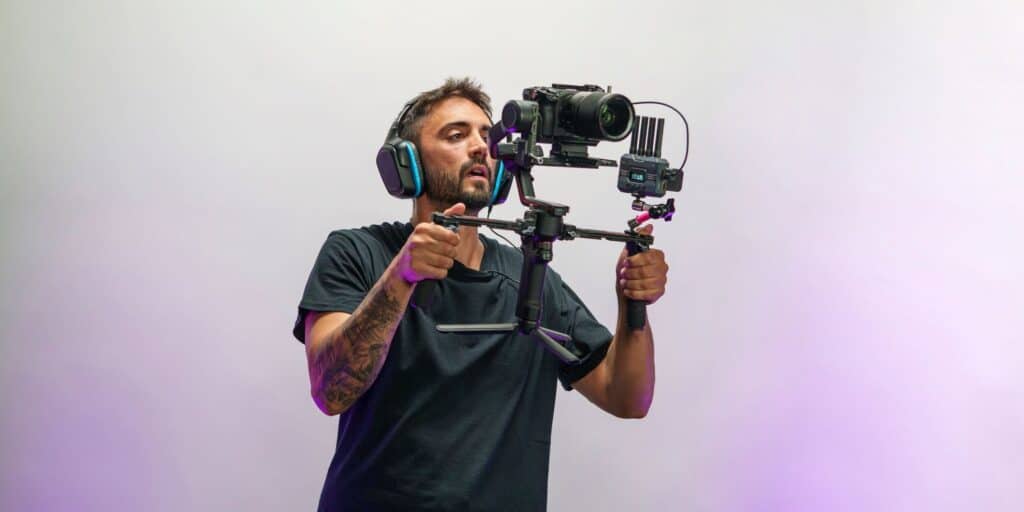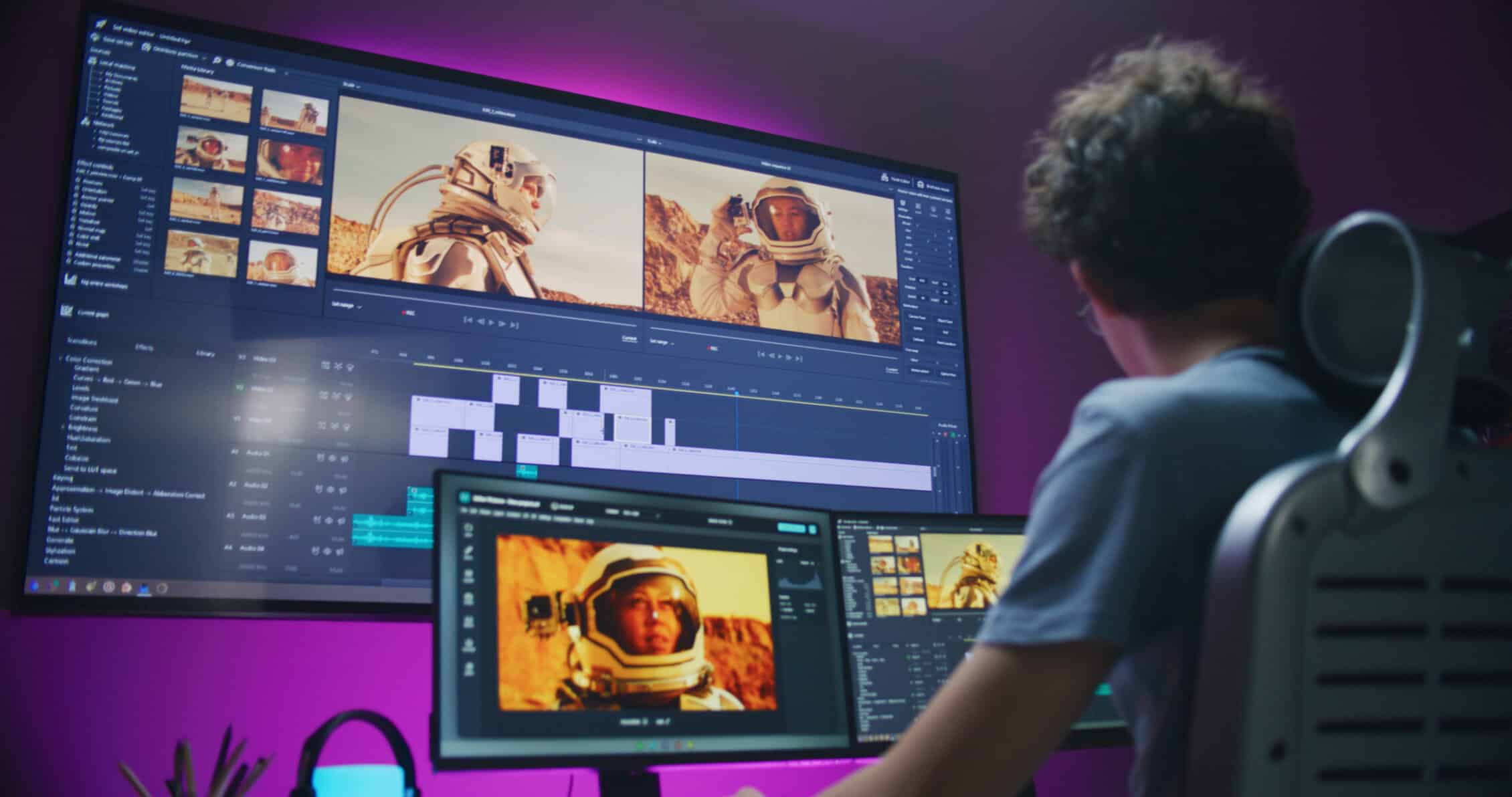A video-first content strategy prioritizes the creation of video assets that are then repurposed across all other formats and platforms (text, audio, images). This approach drives superior engagement, improves time-on-page, and significantly boosts conversion rates, making it a critical investment for modern marketing directors.
You’re considering a significant investment. Going video-first isn’t just about making clips; it’s a strategic pivot. It impacts budget, resources, production workflows, and, most importantly, results. As a Marketing Director, you need more than just general advice; you need a concrete, ROI-driven thesis that justifies the spending. The real power of this strategy lies in its platform agility—we’ll show you how to build a flexible, high-yield system, not just a series of isolated videos.
In this definitive guide, we’ll move beyond the basics. We’ll cover the financial justification for this shift, break down a successful hub-and-spoke content model built on video, and reveal the crucial technical SEO and distribution strategies required to see a true return on your video investment.

The Video Investment Thesis: Justifying Spend with Measurable ROI
The mandate for a video-first strategy is clear, but the budget approval is the hard part. Video production costs are often seen as a liability instead of a multiplier. The true investment thesis doesn’t rest on views; it rests on superior funnel performance, better lead quality, and higher retention. When positioned correctly, video isn’t an expense—it’s the most effective way to lower your long-term cost-per-acquisition (CPA).
The Three Pillars of Video ROI Justification:
- Superior Engagement and Time-on-Site: Video drastically outperforms text in holding attention. An article with a high-quality, relevant video can increase time-on-page by over 100%. This extended engagement signals to search engines that your content is valuable, boosting your SEO.
- Conversion Optimization Power: Video provides a level of clarity and trust that text cannot match. Product videos on e-commerce pages, for example, have been shown to increase conversion rates by as much as 80%. When the user sees the value, they are far more likely to convert. This is a critical component of any comprehensive conversion optimization strategy.
- Lead Quality and Intent: Video acts as a powerful qualifier. By consuming an in-depth, six-minute explanatory video, a user signals a far higher intent level than one who merely skimmed a blog post. Leads generated after video consumption often show reduced churn and higher lifetime value (LTV).
What financial and engagement metrics justify a video-first pivot?
The metrics that justify your shift to a video-first model must align with your overarching digital marketing strategy. Stop tracking vanity metrics like simple “views” and focus on these measurable, high-value indicators.
- Platform Agnostic Efficiency (Cost Per Placement – CPP): A single high-quality, long-form video should not be judged by its Cost Per Deliverable (CPD). Instead, measure its value by its Cost Per Placement (CPP). If one $10,000 asset can be atomized into 20 placements (YouTube long-form, 4 short-form social clips, 10 email GIFs, a paid ad campaign, and a landing page embed), its effective CPP plummets, making it significantly more efficient than producing 20 text-only pieces.
- Completion Rate: A high completion rate (e.g., 60% or more) for long-form video demonstrates true audience investment and content resonance.
- Video-Driven Conversions: Track specific users who viewed a key video before converting. This shows a direct line between the content and the revenue.
- Time-to-Conversion (TTC): For complex B2B sales or high-consideration purchases, video shortens the educational cycle, often leading to a faster close.
- Reduced Support Costs: Explainer videos and detailed tutorials reduce incoming support queries. This is a quiet, powerful ROI metric that cuts operational expenses.
We must also acknowledge the crucial shift in where that video lives, which is a key differentiator from simpler strategies. While YouTube is excellent for search exposure, its purpose is discovery. The real high-intent, conversion-driving video often lives directly on your landing pages, serving as a powerful component of your eCommerce SEO content strategy or hotel marketing strategy development.

Operationalizing Video: The Hub-and-Spoke Content Model
The common mistake of a video strategy is treating every piece as a siloed production project—a one-and-done output. This is the surest way to fail the ROI test. A truly video-first organization uses a Hub-and-Spoke Model where one high-value video (the Hub) spawns dozens of smaller, targeted content assets (the Spokes). This is how you achieve aggressive content goals without aggressive spending.
The Hub is always a high-production, long-form asset designed to provide definitive value on a core topic. This could be an Executive Interview, a Product Deep Dive, or a comprehensive Webinar.
How can we structure our video production to maximize repurposing and reach?
Maximizing repurposing and reach is a direct result of process. It starts in pre-production, not post-production. The goal is to design the Hub video so that its component parts are immediately usable across all distribution channels.
Designing the Hub for Atomization:
- Script for Segmentation: Write the script for your 10-minute Hub video with clear, distinct chapters. Each chapter (30–60 seconds) should function as a standalone social clip.
- Visual Asset Separation: Ensure high-quality B-roll, motion graphics, and charts are created separately during production. These assets can then be used as static images, animated GIFs, or components in blog posts ([INTERNAL LINK: to a Phrasing article on visual content]).
- Audio-First Mentality: Treat the audio track as a separate asset. This allows for immediate distribution as a podcast or use in platforms where users listen without watching (e.g., LinkedIn feeds).
The Spoke Distribution Strategy (Platform-Agnostic Placement):
Remember, you must go where your audience is, and that is not always YouTube.
- Conversion Spokes (Landing Pages & Email/CRM): This is the highest-ROI use of video. Embed the full Hub video on a pillar page (for SEO) and use 5-second, high-impact video snippets in email campaigns to increase click-through rates. These placements are conversion-focused, driving direct business results.
- Discovery Spokes (YouTube & SEO): This is where you leverage YouTube’s search power. Post the full Hub video and ensure its accompanying long-form article is indexed. Crucially, use video snippets in your written articles to improve dwell time and reduce bounce rate—a powerful signal for your Content strategy for SEO.
- Engagement Spokes (Social Media): Take the 30-second segments designed in step one and post them natively on platforms like LinkedIn (crucial for Marketing Directors), Instagram Reels, and TikTok. Crucially: Post Natively. Each platform rewards native uploads with far greater reach than simple link-sharing ([EXTERNAL LINK: to a non-competing social media best practices article]).
The strategic choice of Hub content determines the success of the Spokes. An executive talking about hotel marketing strategy development is the perfect Hub to spawn a LinkedIn thought-leadership series (Spokes), which in turn generates high-quality B2B leads. A Product Deep Dive is the perfect Hub for an eCommerce email marketing content sequence (Spokes) leading directly to sales.

From Views to Value: Technical SEO and Full-Funnel Measurement
A flawless video-first strategy requires more than great production and a smart distribution plan; it demands technical rigor. If your video is not correctly indexed, structured, and measured, its high production value is wasted. This section covers the two most critical components for maximizing your return: Video SEO and attribution.
How do we ensure our video content is maximized for search and conversion?
Maximizing video for search and conversion is about treating it as a first-class SEO citizen, not just a media embed. The technical details determine whether that video asset pays back the investment.
1. The Crucial Role of Video Schema and Indexing (On-Site):
For any video embedded on your website (your conversion-focused Spoke), you must implement VideoObject Schema Markup. This code explicitly tells Google and other search engines what the video is about, its duration, a description, and the thumbnail. When implemented correctly, it allows Google to feature your content directly in rich video carousels and in AI Overviews.
2. Off-Site SEO: The Social Video Search Multiplier:
This is a critical, often-overlooked area. The content you post natively to YouTube, TikTok, and Instagram does not exist in a silo. Those platforms have their own internal search ranking systems, but Google actively indexes content from these sites.
- Google Search Integration: High-authority, well-optimized social video assets frequently rank directly in standard Google SERPs. A video created for TikTok, if highly relevant and optimized, can become a first-page Google asset.
- AI Chat Influence: Furthermore, the content within these videos—especially the transcripts and authoritative commentary—is referenced by AI chat agents like ChatGPT, Gemini, and Claude. This means your video is not just content; it’s an authoritative data source shaping the answers your audience receives. The $10,000 Hub video is now directly influencing the informational ecosystem ([INTERNAL LINK: to a Phrasing article on content for AI/Generative Search]).
3. Optimize Beyond YouTube:
While YouTube is the second largest search engine, the optimization required for platforms like LinkedIn, Facebook, and your own website is distinct.
| Platform | Core SEO/Conversion Action | Why It Matters for ROI |
| Your Website | Native hosting (Vimeo/Wistia) and Video Schema. | Ensures superior load times and grants direct control over the conversion environment. |
| YouTube | Comprehensive tagging, long description, keyword-rich title. | Maximizes discovery at the top of the funnel (TOFU). |
| LinkedIn/Social | Native upload with a short, engaging text caption. | Bypasses algorithm penalties for external links and boosts native engagement. |
Full-Funnel Measurement: Connecting Video to Revenue
To prove the ROI we discussed in Block 2, you must track the video journey beyond the “view.”
- Attribution Modeling: Use advanced analytics (e.g., Google Analytics 4) to assign value based on video engagement. A multi-touch attribution model can confirm that a user who watched your “Deep Dive” video (TOFU) is more likely to convert faster than a user who did not.
- Engagement Gating: For your highest-value B2B assets (like the Executive Interview Hub), employ a light lead-gate after the first 30 seconds. This generates high-quality, video-qualified leads, ensuring that your lead generation strategy is directly benefiting from your video investment.
Heatmaps and Drop-Off Analysis: Tools like Hotjar or Wistia’s video analytics can show exactly where viewers drop off. This data allows your team to constantly refine your scripts and production, increasing completion rates and thereby improving the financial efficiency (CPP) of your subsequent video production efforts.
Conclusion: The Platform-Agnostic Video Mandate
The decision to adopt a video-first content strategy is not a creative choice; it is a financial imperative. For Marketing Directors, the true value of this pivot lies not in chasing fleeting views, but in achieving a drastically lower Cost Per Placement (CPP) and accelerating the customer’s journey from discovery to conversion.
We have established a clear investment thesis: video drives superior engagement, enhances conversion rate optimization, and—when managed through a Hub-and-Spoke Model—is the most efficient content production system available. The high cost of a single Hub video is mitigated by the dozens of high-value, trackable Spoke assets it creates across your website, social channels, and email sequences.
To succeed, you must move beyond the simple goal of “making videos.” You must become experts in platform-agnostic distribution and technical attribution, ensuring that every asset is correctly indexed with Video Schema and that its influence is measured across the full customer funnel. By integrating video deeply into your digital marketing strategy, you position your brand not just for today’s market, but as an authoritative data source for the AI-driven future.
Ready to transform your content from a cost center into a high-yield asset? Let’s talk about our outstanding Creative Services agency options.
Key Takeaways
The primary justification is a superior Return on Investment (ROI) driven by a drastically lower Cost Per Placement (CPP). By creating one high-value video (the Hub) and repurposing it into dozens of smaller assets (the Spokes), the effective cost of content production and distribution is significantly reduced, yielding higher efficiency than text-only strategies.
The Hub-and-Spoke Model focuses on producing a single, long-form asset (the Hub) designed for easy segmentation. This Hub is then “atomized” into multiple, channel-specific pieces (the Spokes) for distribution on platforms like LinkedIn, TikTok, and your website, maximizing reach and minimizing production overhead.
While YouTube is vital for search-driven discovery, a video strategy must be platform-agnostic. High-intent, conversion-focused video should be hosted directly on owned properties (landing pages) and optimized for specific social channels to leverage native distribution and ensure direct control over conversion tracking.
Social media videos offer long-term SEO value because their content is actively indexed by search engines like Google and is referenced by AI chat agents. By optimizing the captions and transcripts, these native social clips transform from temporary engagement assets into authoritative, highly searchable data sources that influence the informational ecosystem.
The single most important step is implementing VideoObject Schema Markup for all embedded videos. This code provides search engines with explicit context about the video’s content, allowing your asset to appear in rich video carousels and be prioritized for AI Overviews, which drives highly qualified traffic to your conversion pages.

